Detroit's abandoned tunnel systems open door to another world
Below Detroit's streets is a network of tunnel systems almost as elaborate as the bustling metropolis that sits above it.
Unveiling this underworld opens a cavern of secrets necessary to understanding Detroit's history. While most of the tunnels are now abandoned and closed off to the public, learning about these labyrinths can contextualize the city's importance on the national level.
From the salt mines used to launch the city into economic prosperity at the start of the 20th century to the remnants of hidden caverns used to store liquor during America's Prohibition, explore what lies below:
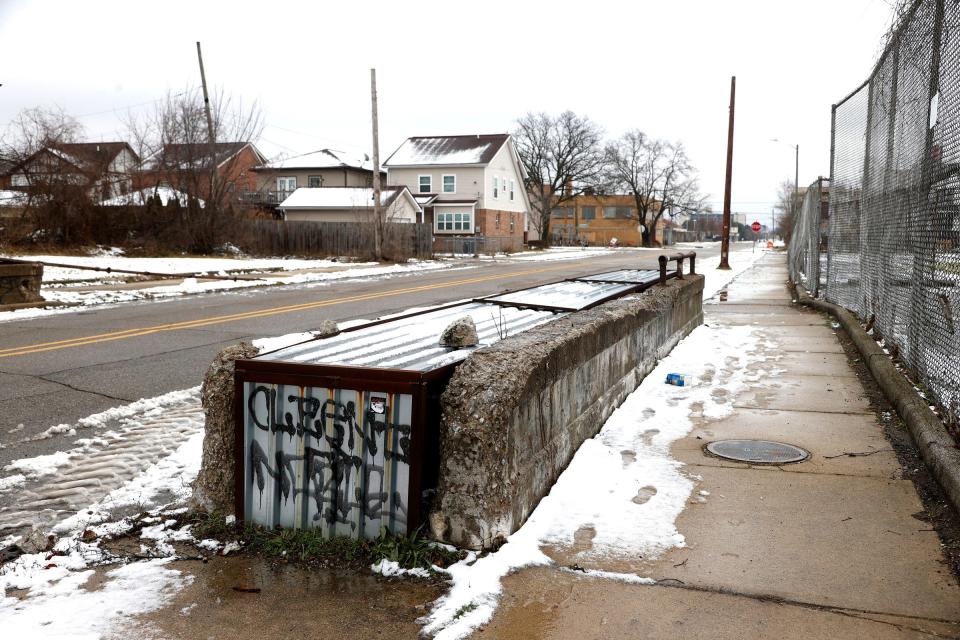
Pedestrian walkways
Around 100 years ago, the popularity of automobiles resulted in a historic spike in pedestrian deaths. Detroit’s Highland Park neighborhood, which housed close to 50,000 residents in the early 1920s, reported a historic spike in pedestrian fatalities in 1924.
The solution was to build an underground tunnel to direct all pedestrian traffic, similar to the style of underground walkways seen in London and Canada. Three more tunnels were built at the Highland Park intersection in 1925, including one in Midtown at Cass Avenue and Peterboro Street, though no physical remnants of the latter site remain today.
Documented by TikTok user @Colin313 in July 2022, Highland Park’s raised cement underpass can be seen at the corner of Cortland and Second Avenue.
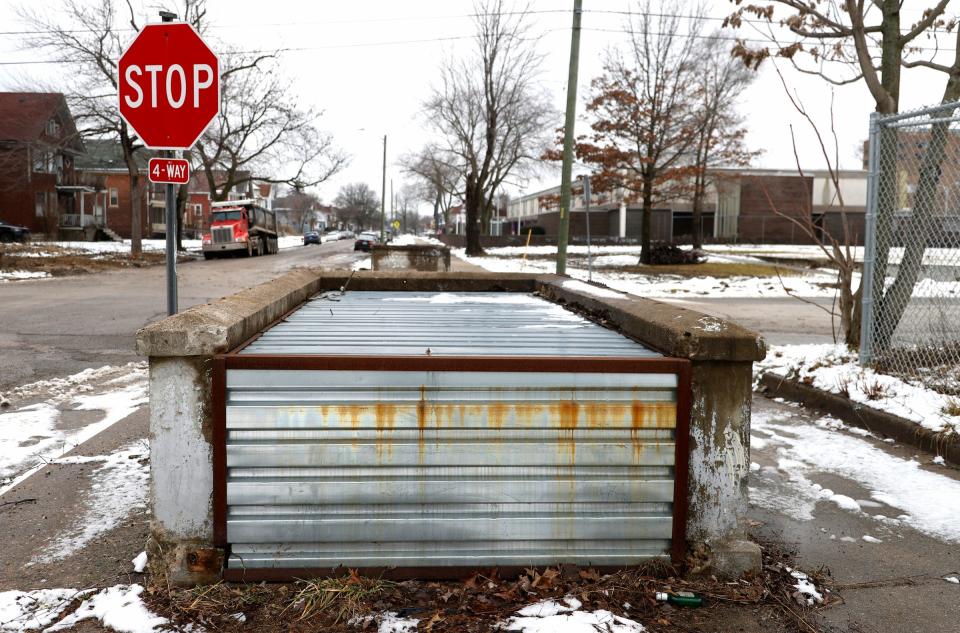
Salt mines
Rock salt was discovered below the depths of Michigan’s streets in 1895, and almost immediately, the horizontal salt beds were mined for the resource’s rich currency.
By 1906, Detroit established the Detroit Rock Salt Co. to develop a safe, effective way to mine the salt. It took years of configuration before a 1,060-foot shaft was dug into the city’s core and by 1914, Detroit was exporting 8,000 tons of rock salt each month.
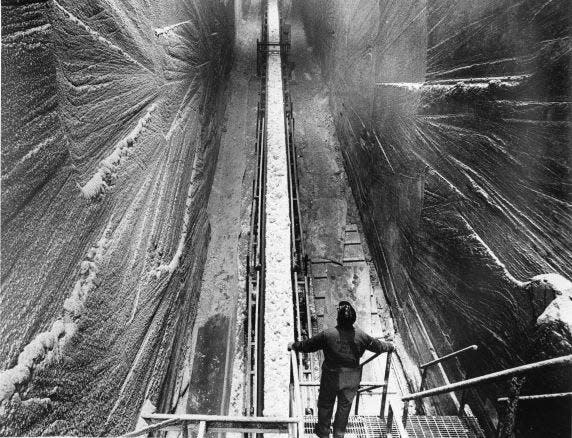
The mines remained operational until 1984 and reopened after a brief hiatus in 1983 to provide the road salt used by the city today. Road salt is the only form of salt currently produced by the mines, and tours were provided briefly in the mid-1980s but are now suspended because of ongoing production.
More: A look inside Wayne County's salt distribution process each winter
Tunnels at Detroit's Fisher Building
Detroit’s Fisher Building was constructed in 1927 by the Fisher brothers, whose Fisher Body Co. was responsible for the closed-body chassis of the 1910 Cadillac and introducing the first four-door sedan bodies.
This immense success in reimagining the automobile industry motivated the brothers to purchase 32 parcels along West Grand Boulevard to “serve as an expressive testimonial of the Fishers’ activity in Detroit.”
The art deco, 441-foot building is flanked by two 11-story, flat-roofed wings and is topped with a glowing green spear.
Below ground, an elaborate tunnel system connected the Fisher to New Center and General Motors buildings to ease employee commute.
The tunnels are open today, though all of the once bustling storefronts are now shuttered.
More: 10 fascinating facts about Detroit's Fisher Building
Detroit Medical Center tunnels
Adjacent to Wayne State University’s campus in Midtown, the Detroit Medical Center holds eight hospitals in a one-block area surrounded by John R, Mack, St. Antoine and East Canfield Street. A tunnel system connects each of the hospitals making safe, seamless travel for patients and medical employees alike.
Prohibition-era tunnels
A little over 100 years ago, Detroit stood as the first major U.S. city to instate Prohibition, a complete criminalization of alcohol and those who distribute and consume it, which lasted more than a decade before being repealed in 1933.
Almost as quickly as the law was enacted, underground smuggling and speakeasies began to appear, with some experts estimating Detroit’s river crossing to Canada was responsible for 75% of alcohol flowing into the U.S. during Prohibition.
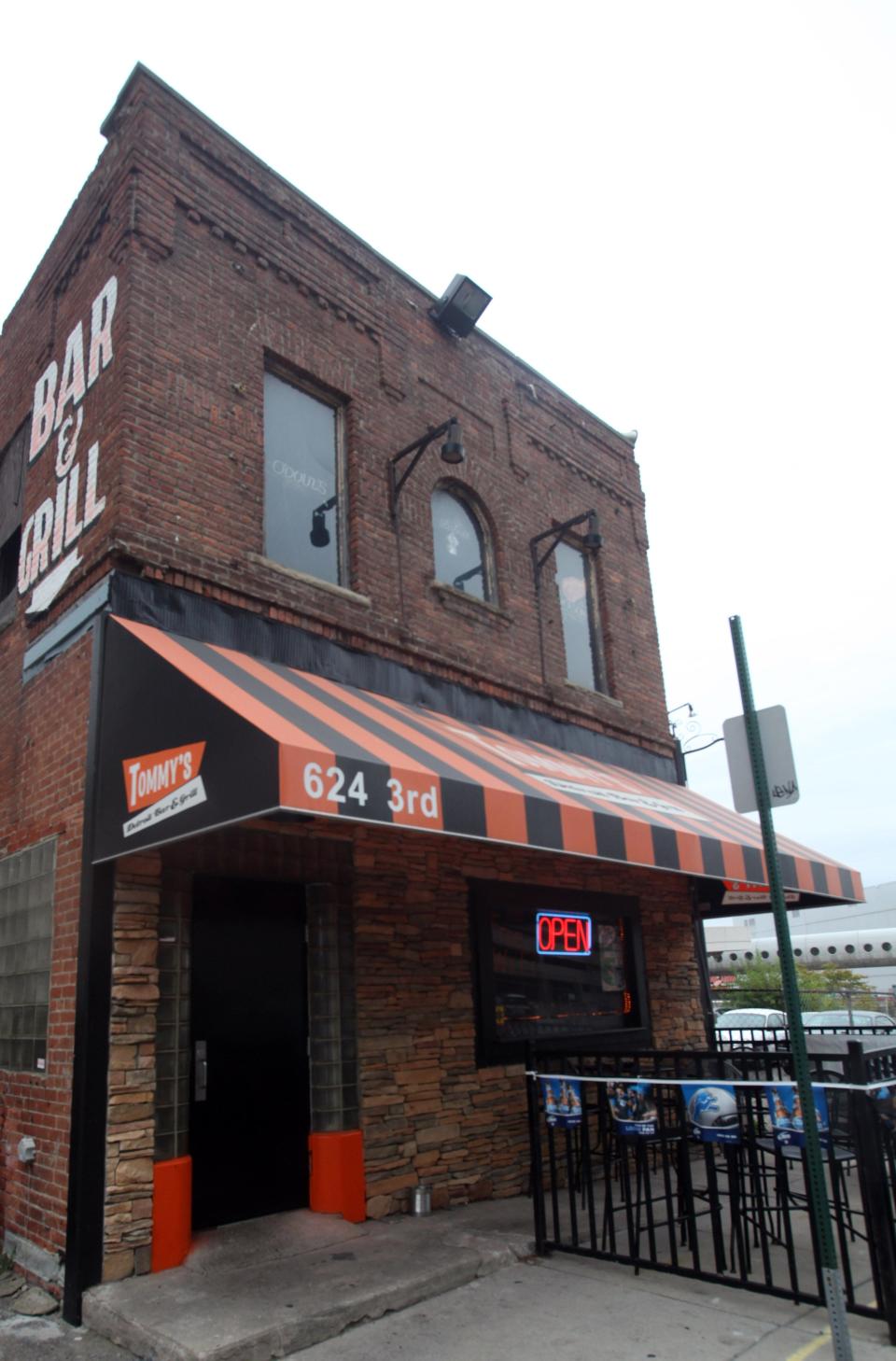
Tommy’s Bar on Third Avenue was formerly owned by businessmen affiliated with the city’s notorious Purple Gang, and a WSU-sponsored archaeological dig in 2013 unearthed an underground speakeasy and tunneling system leading to a false room below the bar.
Utility tunnels
Installed in the early 1950s, utility tunnels below Detroit’s Midtown and downtown streets carry the water and steam necessary to fuel the area.
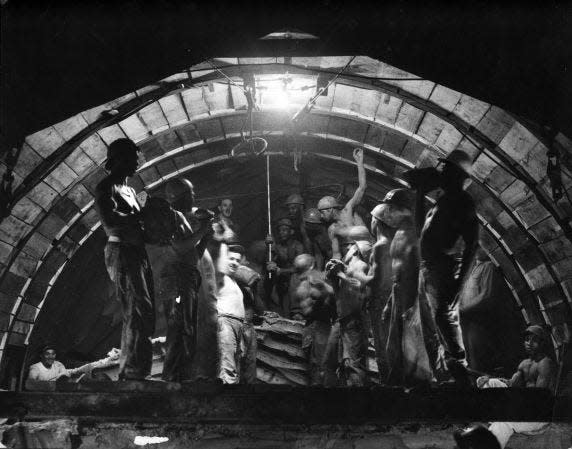
A network of steam tunnels and pipes dates to 1903 and is used to heat buildings throughout the city today. Reaching 60 feet below the street surface and opening into a 10-foot by 10-foot well, the tunnels stretch for miles.
The steam loops ran on coal until converting into natural gas in the 1970s, and Detroit’s incinerator became its main source by 1986.
The steam is also used to cook hot dogs at Lafayette Coney Island and brew beer at Detroit Beer Co.
Beyond the city ...
Detroit Metropolitan Airport's Light Tunnel
A tunnel of psychedelic lights connects Detroit Metropolitan Airport’s A and B/C Councourses to an original soundtrack.
Located in McNamara Terminal, the Light Tunnel is nearly 800 feet long and illuminated by 9,000 feet of glass panels and LED lighting — as a moving walkway carries passengers through the tunnel.
For those with light or noise sensitivity, a “suspend button” at the end of each tunnel pauses the light and music show for 15 minutes.
Northland Center’s underground tunnels
Below the halls of the former Northland Center in Southfield is a miles-long labyrinth of tunnels, with an astonishing 484 rooms, dating to 1954. The tunnels were used primarily for truck deliveries to and from Northland’s stores and also included storage space and nuclear bomb shelters.
The unique system of service tunnels set a precedent for surrounding shopping centers, although they were off-limits to the public and remained closed and unpassable after the mall's closure in 2015. The tunnels were likely buried during the mall’s demolition in 2021, leaving behind a treasure trove of arcade games and mannequin torsos.
This article originally appeared on Detroit Free Press: Detroit's abandoned tunnel systems open door to another world

